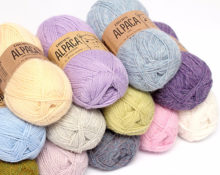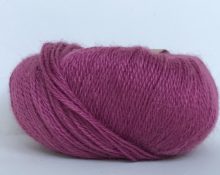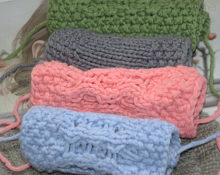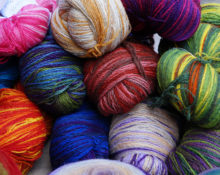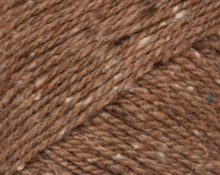Handicraft lovers, especially knitters, prefer to use natural materials in their products as often as possible. The market is oversaturated with all kinds of species, we have heard about them all, but we are not familiar with them all. In this article we will talk about acrylic yarn and its properties. Since people who make wardrobe items and accessories with their own hands need to know what they have to work with and how to properly care for the finished products.
What is acrylic yarn?
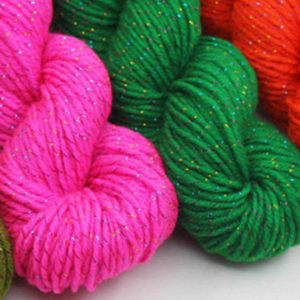 Acrylic is a common term referring to polymers based on methacrylic acid.. This name refers to paints, fibers, plastics and other materials. But most often we hear this word in relation to yarn.
Acrylic is a common term referring to polymers based on methacrylic acid.. This name refers to paints, fibers, plastics and other materials. But most often we hear this word in relation to yarn.
Acrylic fiber was first created in the mid-twentieth century by American scientists. Obtained through complex technical processes, therefore the threads are of purely synthetic origin.
What is its composition?
In the textile industry it can be called by other names - PAN, Orlon, Nitron, acrylic, Kurtel, polyacrylic, prelana, depending on the country of origin. The raw material for its production is natural gas. A semi-finished roving is produced in the form of a smooth continuous strip.
Properties of acrylic threads
We now know that this material is 100% synthetic. But this does not mean at all that it has only some shortcomings.
Pros and cons of acrylic
For beginner knitters, it is an ideal learning tool: light, cheap, easy to use, since the threads do not get tangled in the loops. More of its qualities:
 Very durable in products, retain their shape perfectly.
Very durable in products, retain their shape perfectly.- They do not shrink, do not stretch, do not roll down during use, and do not wrinkle.
- The fabric knitted from threads has a soft, pleasant tactile sensation.
- They dye well, so the yarn is sold in bright, rich tones.
- At the same time, it is characterized by increased resistance to fading and color loss during washing.
- It dries quickly, which is an indispensable feature in road conditions.
- High-quality acrylic has hypoallergenic properties; this advantage is used in the production of children's toys. AND seems to be the best solution for people who have an allergic reaction to wool.
The negative properties of acrylic include increased ability to become electrified, as well as low hygroscopicity and breathability.
What is 100% acrylic?
In its pure form, acrylic, as a rule, is practically not used in the creation of clothing. It is added to mixed threads to give them strength and elasticity. They add exclusivity and charm to rugs or soft toys.
Blended yarn - what is it?
 Blended yarn usually consists of a certain percentage of natural threads and acrylic. In multicomponent fibers it can be no more than 5–10%. If it is added to wool or cotton, then it is 35% or more. In such a duet, the product acquires all the positive qualities, which is an excellent property at the time of use of the clothing. These are softness, volume, strength and resistance to deformation during the care process.
Blended yarn usually consists of a certain percentage of natural threads and acrylic. In multicomponent fibers it can be no more than 5–10%. If it is added to wool or cotton, then it is 35% or more. In such a duet, the product acquires all the positive qualities, which is an excellent property at the time of use of the clothing. These are softness, volume, strength and resistance to deformation during the care process.
What can you knit from it?
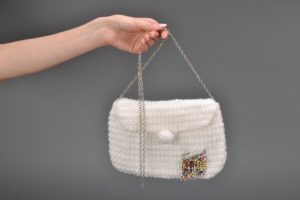 The most experienced knitters recommend using it for children's clothes, as it does not cause allergies and has a pleasant weightlessness. In addition, babies grow very quickly, and making things from more expensive yarn causes considerable damage to the family budget.
The most experienced knitters recommend using it for children's clothes, as it does not cause allergies and has a pleasant weightlessness. In addition, babies grow very quickly, and making things from more expensive yarn causes considerable damage to the family budget.
The smooth texture looks attractive in small ready-made toys knitted and crocheted. They are quite durable and have no lint, which will protect your baby from troubles while playing. Such crafts are easy to wash and dry quickly.
Bright accessories from it look no less attractive: jewelry in the form of bracelets, collars, belts, bags. Funny crocheted slippers in the shape of animals will be an excellent home attribute.
It turns out to be an interesting decor for the home and as a gift in the form of a bedspread, sofa pillows, or blanket.
How to care for acrylic?
When using acrylic yarn in your work, you need to know a few rules to help keep the product in perfect condition:
 do not try to steam finished parts or items with an iron, as acrylic changes its structure under the influence of high temperatures, remember that it is a polymer substance;
do not try to steam finished parts or items with an iron, as acrylic changes its structure under the influence of high temperatures, remember that it is a polymer substance;- wash only at room temperature, you can pre-soak for a few minutes;
- to reduce static properties, add an antistatic agent to the rinsing water;
- wash by hand in warm water with the addition of softening agents;
- It is not recommended to twist the finished product. Wrap in a thick towel, roll and remove excess moisture;
- Machine washable on delicate cycle at 30 degrees;
- When finished, use a gentle spin.
- It is necessary to dry in a horizontal position to avoid deformation and stretching of the threads;
- do not dry on a radiator or near heating devices;
- Do not dry in direct sunlight.
These simple but practical tips will help you use your favorite thing for many years.


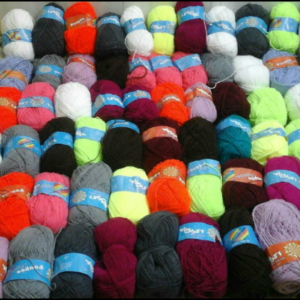 Very durable in products, retain their shape perfectly.
Very durable in products, retain their shape perfectly.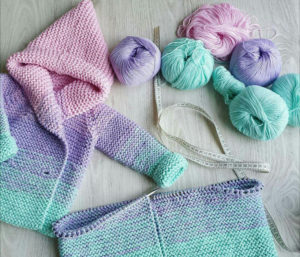 do not try to steam finished parts or items with an iron, as acrylic changes its structure under the influence of high temperatures, remember that it is a polymer substance;
do not try to steam finished parts or items with an iron, as acrylic changes its structure under the influence of high temperatures, remember that it is a polymer substance; 0
0